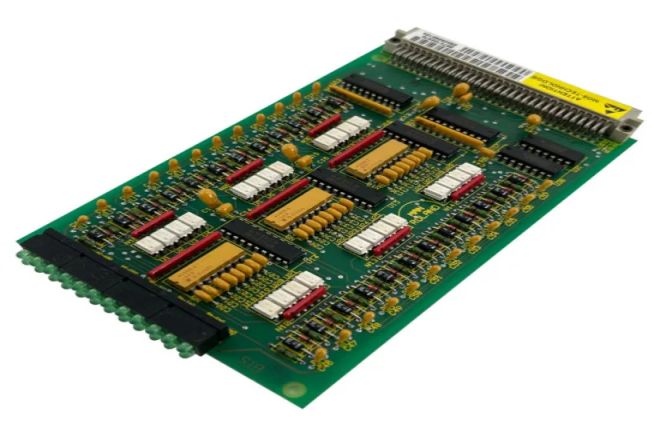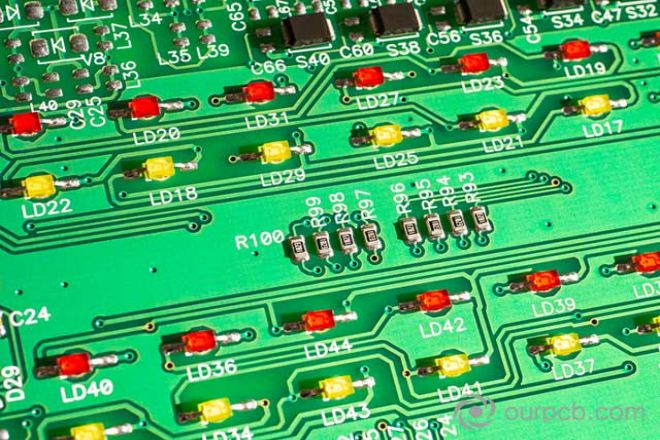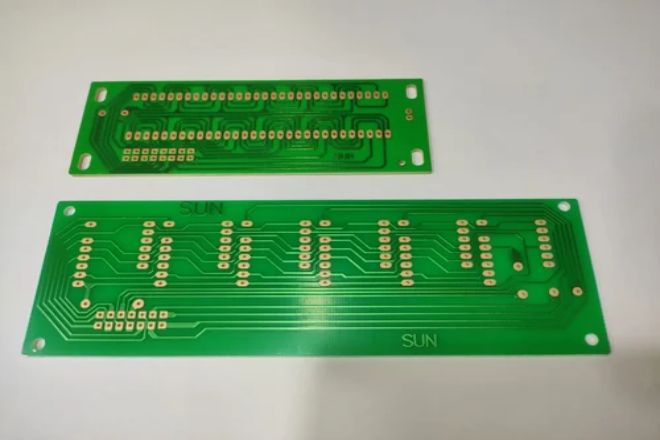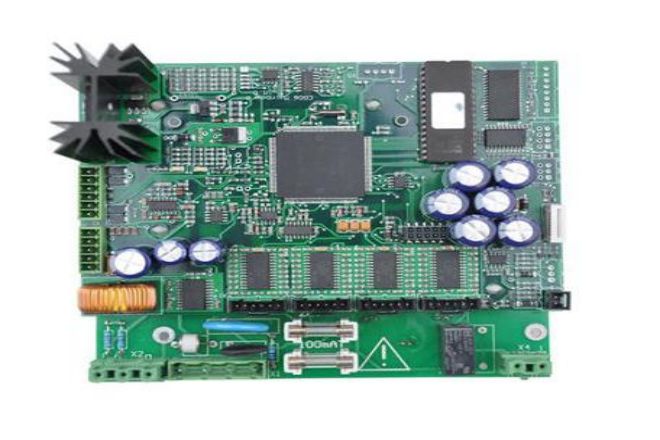مقدمة

ومع التطور السريع للعلوم والتكنولوجيا، شاشات عرض LED, as an important medium for modern information dissemination, have been widely used in many fields, such as commercial advertising, public information displays, and stage performances.
LED display screens have become the leader in modern visual presentation technology with significant advantages such as high brightness, high definition, low power consumption, and long life. However, in this complex system, one critical component is often overlooked: the printed circuit board (PCB). PCB is not only the “skeleton” and “blood vessel” of the LED display but also the key to its stable operation and excellent performance.
1. Basic concepts and functions of PCB

PCB, or Printed Circuit Board, is an indispensable basic component in modern electronic equipment. It provides a method of fixing electronic components on a mechanical carrier and achieving electrical connections between electronic components through a specific network of metal wires and contacts.
The role of PCB in electronic equipment
- التوصيل الكهربائي:
The network of metal wires and contacts on the PCB is the basis for electrical connections between electronic components. These metal wires are usually made of thin-film metal materials and are accurately inserted into non-conductive substrates according to predetermined design layouts to ensure reliable and stable signal transmission, power distribution, and data exchange between electronic components.
- Mechanical support:
PCB not only provides electrical connections for electronic components but also provides mechanical support and fixation. Electronic components can be mounted on the PCB by soldering or insertion, ensuring their stability and accurate positioning. This mechanical support function is crucial for the stable operation of electronic devices.
- نقل الإشارة:
The network of wires on the PCB acts as a channel for signal transmission, allowing electronic components to communicate with each other and exchange information. These signals can be analog signals (such as sound, and images) or digital signals (such as data, and control signals). PCB design and layout have an important impact on the efficiency and stability of signal transmission.
- Thermal Management:
PCB structure and materials also play an important role in thermal management. By properly laying out wires and heat sinks, and using appropriate materials, PCBs can effectively conduct and disperse heat, preventing electronic components from overheating, thereby improving system reliability and stability.
2. The role of PCB in LED display
- Connection and support
In LED displays, PCB, as the core component, plays an important role in connection and support. Specifically, PCB accurately connects various components in the LED display (such as LED chips, drive circuits, control chips, etc.) through its internal metal wires and contact network to form a complete circuit system.
This connection method not only ensures the accurate transmission of signals but also ensures the stability and reliability of the entire system. At the same time, PCB also provides stable support for these components, preventing components from loosening or being damaged due to external force or vibration.
- Signal transmission
In LED displays, PCBs bear the important task of transmitting signals efficiently and accurately. The LED display screen needs to display various images and text information, and this information needs to be transmitted through the wired network on the PCB. The design layout of the PCB and the selection of wire materials will directly affect the efficiency and stability of the signal transmission.
Excellent PCB design can ensure that the signal will not be interfered with or attenuated during transmission, thereby ensuring the display effect and performance of the LED display.
- الأداء الحراري
The LED display screen will generate a large amount of heat during its working process. If the heat cannot be dissipated in a timely and effective manner, the temperature of the LED chip and other components will rise, thereby affecting the performance and life of the display screen.
The design of PCB has an important impact on the heat dissipation performance of LED displays. By optimizing the layout and routing of the PCB, the line impedance and heat generation can be effectively reduced.
At the same time, adding heat sinks and thermal conductive structures to the PCB can also improve heat dissipation efficiency and ensure long-term stable operation of the LED display.
To sum up, PCB plays multiple roles in LED displays such as connection and support, signal transmission, and heat dissipation performance. Its design and manufacturing quality directly affect the performance and stability of the LED display.
Therefore, in the design and manufacturing process of LED displays, we must attach great importance to the role of PCB, and use advanced technology and materials to ensure the quality and performance of PCB.
3. The relationship between PCB design and LED display performance

- Design accuracy
PCB design accuracy has a significant impact on the display effect of LED display screens. First of all, high-precision PCB design can ensure accurate connections between key components such as LED chips and drive circuits, thereby avoiding display failures or distortions caused by connection problems.
Secondly, a high-precision PCB design can optimize the signal transmission path and reduce signal loss and interference, thus improving the display effect of the LED display, resulting in higher brightness and contrast and more accurate color reproduction.
In addition, high-precision PCB design can also improve the response speed of the LED display, making dynamic image display smoother.
- Material selection
The material selection of PCB has an important impact on the performance of LED displays. First of all, the PCB substrate material determines its thermal conductivity, insulation, mechanical strength, and other properties.
For example, FR-4 fiberglass panels are widely used in LED displays due to their good insulation and heat resistance. However, in some special applications, such as displays that require higher thermal conductivity, high-performance materials such as aluminum substrates or ceramic substrates can be selected.
Secondly, the thickness of the copper foil and surface treatment of the PCB will also affect its electrical performance and reliability. For example, thicker copper foil provides better current-carrying capacity and heat dissipation, while surface treatments such as tin or silver plating can improve conductivity and oxidation resistance.
- Layout optimization
By optimizing the PCB layout, the performance and reliability of the LED display can be significantly improved. First of all, reasonable layout can reduce line length and crossover, reduce signal loss and interference, and improve signal transmission efficiency. Secondly, the optimized layout can also improve heat dissipation performance.
By rationally arranging heat sinks and thermal conductive structures, heat can be quickly dissipated, thereby ensuring the stable operation of the LED display. In addition, optimizing the layout can also improve the reliability of the LED display, reduce the failure rate, and improve maintenance convenience by adding redundant design and fault detection mechanisms.
4. The impact of PCB on the cost of LED display
1). Cost of production
As the core component of the LED display screen, PCB’s cost accounts for a non-negligible proportion of the total cost of the LED display screen.
The specific proportion depends on factors such as the specifications of the LED display, design complexity, and the selected PCB material. In terms of cost control, optimizing PCB design is one of the effective ways to reduce LED display production costs.
- Reduce the number of PCB layers:
By simplifying the design and optimizing the layout, reducing the number of PCB layers can directly reduce material costs and manufacturing costs. For example, the use of advanced SMT (surface mount technology) can reduce the number of components on the PCB, thereby reducing the number of layers.
- Choose the right PCB material:
The prices of different PCB materials vary greatly. Choosing the right material can reduce costs while ensuring performance. For example, FR-4 fiberglass boards are a cost-effective choice, while high-performance aluminum substrates or ceramic substrates are suitable for specific high-end application scenarios.
- Optimize PCB size:
Properly reducing the size of the PCB can reduce material usage and manufacturing costs. In the design, the layout and routing of components should be fully considered to ensure that the size is minimized while meeting performance requirements.
- Choose the right PCB manufacturer:
When choosing a PCB manufacturer, you should comprehensively consider factors such as price, quality, delivery time, etc., and choose a manufacturer with high cost-effectiveness to reduce production costs.
2). Repair and replacement
PCB plays an important role in the repair and replacement of LED displays. Choosing a high-quality PCB can not only improve the stability and reliability of the LED display and reduce the failure rate but also reduce repair costs and time costs when repair or replacement is needed.
- Reduce failure rate:
High-quality PCB has better electrical performance and reliability, which can reduce the failure rate of LED displays. This not only reduces the number of repairs and repair costs but also improves user satisfaction and brand image.
- Improve maintenance efficiency:
PCBs with modular design can be easily repaired and replaced. When a module fails, only the module needs to be replaced without replacing the entire PCB, thus improving maintenance efficiency and reducing maintenance costs.
- Extended service life:
High-quality PCB has good durability and stability, which can extend the service life of the LED display. This can not only reduce long-term costs for users but also improve the competitiveness of products.
5. PCB technology development trends and their impact on LED displays

1). Flexible PCB
- سمات:
Flexible PCB, also known as Flexible Printed Circuit Board (FPCB), is thin, light, bendable, foldable, and highly reliable. It is made of a flexible substrate, such as polyimide (PI) or polyester (PET) film, combined with conductive materials such as copper foil.
- Application prospects:
In the field of LED display screens, flexible PCB has broad application prospects. First of all, flexible PCB can adapt to various irregular shapes and curved surface designs, providing more possibilities for the creative design of LED displays.
Secondly, the high reliability and impact resistance of flexible PCBs enable LED displays to maintain stable operation in complex environments. In addition, flexible PCBs can also reduce the weight and thickness of LED displays, further promoting their development in the direction of lightweight and ultra-thin.
2). 3D printing PCB
- تأثير:
3D printing technology has brought revolutionary changes to the field of PCB manufacturing. First of all, 3D printing technology can directly print three-dimensional structure circuit boards without the need for traditional molds and processing equipment, greatly shortening the production cycle and reducing production costs.
Secondly, 3D printing technology can realize personalized customization of circuit boards and meet the diverse needs of electronic products such as LED displays for PCBs.
- Application potential:
In the field of LED displays, 3D printed PCB has huge application potential. Through 3D printing technology, PCBs with complex structures and functions can be manufactured to provide higher performance and more reliable support for LED displays.
In addition, 3D printing technology can also be used to manufacture special-shaped parts of LED displays, such as curved screens, flexible light bars, etc., further promoting the innovative development of LED displays.
3) حماية البيئة والتنمية المستدامة
- Application trends
With the continuous improvement of environmental awareness and the government’s increasingly strict environmental protection policies, the application trend of environmentally friendly PCB materials in the field of LED displays has become increasingly obvious.
These materials are low-toxic, low-pollution, recyclable, and meet environmental protection requirements.
- دلالة:
The application of environmentally friendly PCB materials is of great significance to the sustainable development of the LED display industry. First of all, it can reduce environmental pollution and resource consumption during the production process of LED display screens, meeting the requirements of green manufacturing.
Secondly, environmentally friendly PCB materials can improve the reliability and stability of LED displays and reduce failure rates and maintenance costs. Finally, environmentally friendly PCB materials can also enhance the brand image and market competitiveness of LED displays and meet consumer demand for environmentally friendly products.
خاتمة
To sum up, PCB plays a vital role in LED display. It is not only a bridge connecting various components but also the key to ensuring the stable operation and excellent performance of the display. With the continuous advancement and innovation of PCB technology, we believe that the performance of LED displays will be further improved, and costs will be more effectively controlled.
وأخيرًا، إذا كنت تريد معرفة المزيد من المعلومات حول شاشات LED، يرجى الحصول على اتصال معنا.
